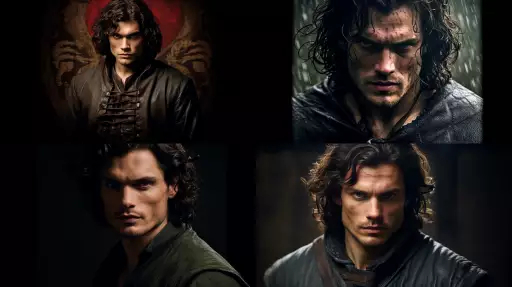Explore the Best AI Image Gallery

Beyond the Brushstrokes: How AI-Generated Visual Content is Transforming Creativity
The creative landscape is undergoing a seismic shift. No longer confined to the realms of human imagination alone, artistic expression is being augmented by powerful new tools: Artificial Intelligence (AI) and its ability to generate visual content. This technology, capable of crafting stunning images, videos, and even 3D models from simple text prompts, is redefining the boundaries of creativity and sparking both excitement and debate within the creative industry.
A New Palette for Artists
For artists, AI-generated visual content presents a tantalizing array of possibilities. Imagine collaborating with an AI that can instantly bring your conceptual sketches to life, generate variations on your existing work, or even suggest novel compositions based on your style. This partnership between human ingenuity and machine learning can accelerate the creative process, freeing up artists to focus on higher-level concepts and refine their vision.
Tools like DALL-E 2, Midjourney, and Stable Diffusion are already making waves, allowing users to generate photorealistic images, abstract art, or even customized illustrations with remarkable precision. These platforms empower individuals without technical backgrounds to experiment with visual creation, democratizing access to artistic tools and fostering a new wave of creative expression.
Beyond the Canvas: Applications Across Industries
The impact of AI-generated visual content extends far beyond the traditional art world. Its applications are rapidly expanding across diverse industries:
- Advertising and Marketing: AI can generate captivating visuals for campaigns, personalized product imagery, or even dynamic advertisements that adapt to user preferences.
- Gaming and Entertainment: Imagine creating immersive game environments, generating realistic character models, or designing unique in-game assets with the help of AI.
- Architecture and Design: Architects can use AI to visualize complex designs, explore different spatial arrangements, or generate innovative architectural concepts.
- Education and Research: AI-generated visuals can enhance learning experiences, create interactive simulations, or aid in scientific visualization and research.
Ethical Considerations: Navigating the Uncharted Waters
While the potential of AI-generated visual content is undeniably vast, it also raises important ethical considerations:
- Copyright and Ownership**: Who owns the rights to AI-generated artwork? How do we address questions of originality and authorship in a world where machines can create?
- Bias and Representation**: AI algorithms are trained on vast datasets, which can contain inherent biases. It is crucial to ensure that AI-generated content does not perpetuate harmful stereotypes or discriminate against certain groups.
- Misinformation and Manipulation**: The ability to generate realistic images raises concerns about the potential for misuse, such as creating deepfakes or spreading propaganda.
Shaping the Future: A Collaborative Approach
The evolution of AI-generated visual content is a journey we embark on collectively. It requires open dialogue, responsible development practices, and continuous ethical reflection. By fostering collaboration between artists, technologists, policymakers, and the general public, we can harness the transformative power of AI while mitigating its potential risks.
The future of creativity lies in embracing this fusion of human ingenuity and machine intelligence. AI-generated visual content is not a replacement for human artistry but rather a powerful tool that can augment our creative abilities, expand our imaginations, and push the boundaries of what is possible.